Rare 'great conjunction' of Jupiter and Saturn wows skywatchers around the world
It was a sight not seen since 1623!
Many people have been eagerly awaiting Monday (Dec. 21) to arrive for several reasons. For one, Monday was the last solstice of 2020. This means people in the Northern Hemisphere experienced the first day of winter, and the summer solstice arrived in the Southern Hemisphere. Second, the two largest planets of the solar system appeared in a rare "great conjunction" that same night, capturing the attention of people across the world.
Saturn and Jupiter are hundreds of millions of miles apart. However on Monday they formed a line through space with Earth, which caused the two gas giants to appear very close to one another in the evening sky shortly after sunset.
Observatories and skywatching enthusiasts across the world have been keenly watching this conjunction because of its rarity. Saturn and Jupiter meet in Earth's sky about once every 20 years, and some years they appear closer to each other than in other years.
NASA officials said in a Dec. 2 skywatching video that both planets were expected to appear separated by less than a dime's thickness held at arm's length apart, or one-tenth of a degree. This proximity in the sky hasn't happened in about 400 years, and it hasn't been visible in the evening sky (when the sunlight doesn't obstruct viewing) in about 800 years.
Related: What was the Star of Bethlehem?
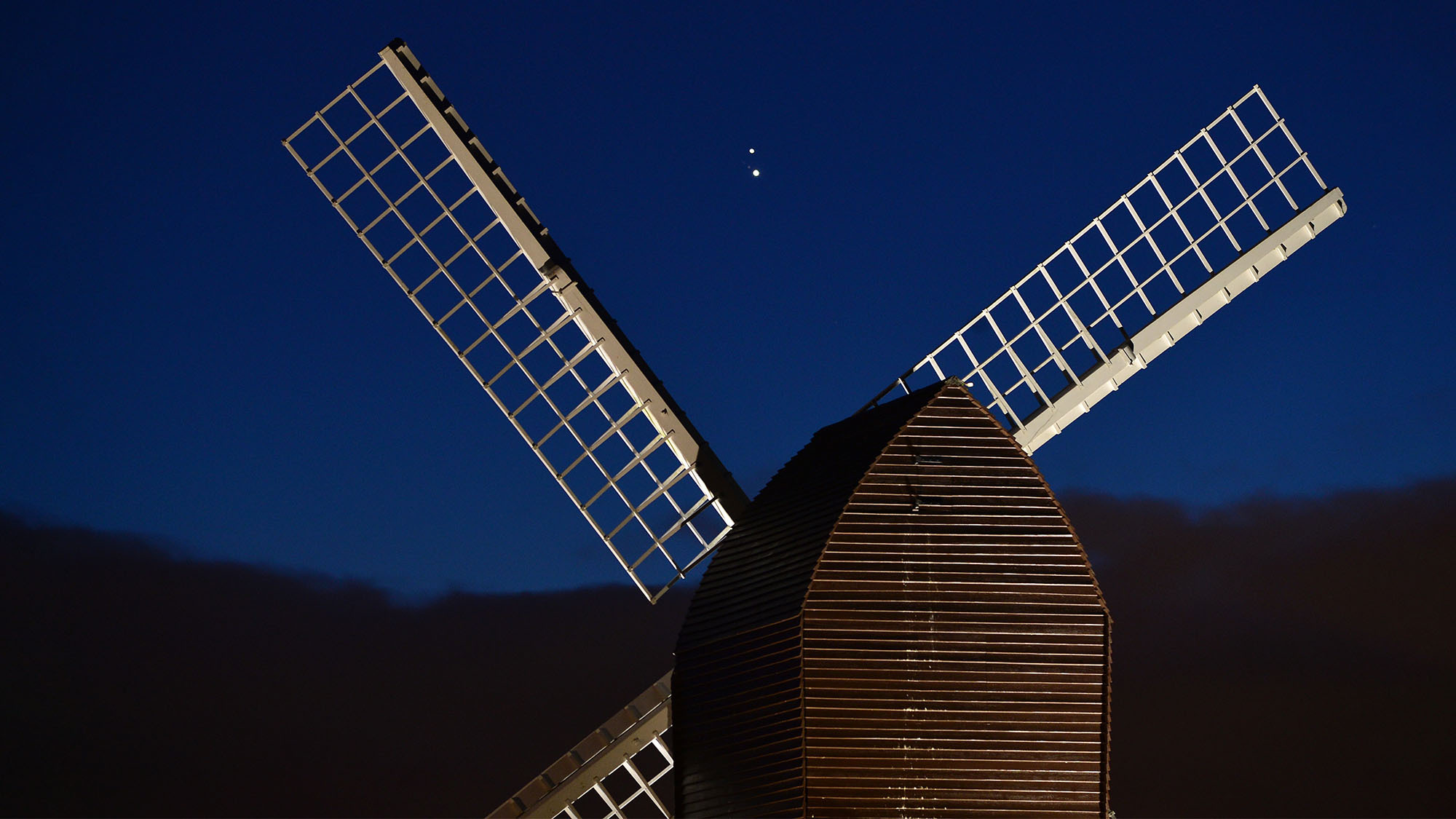
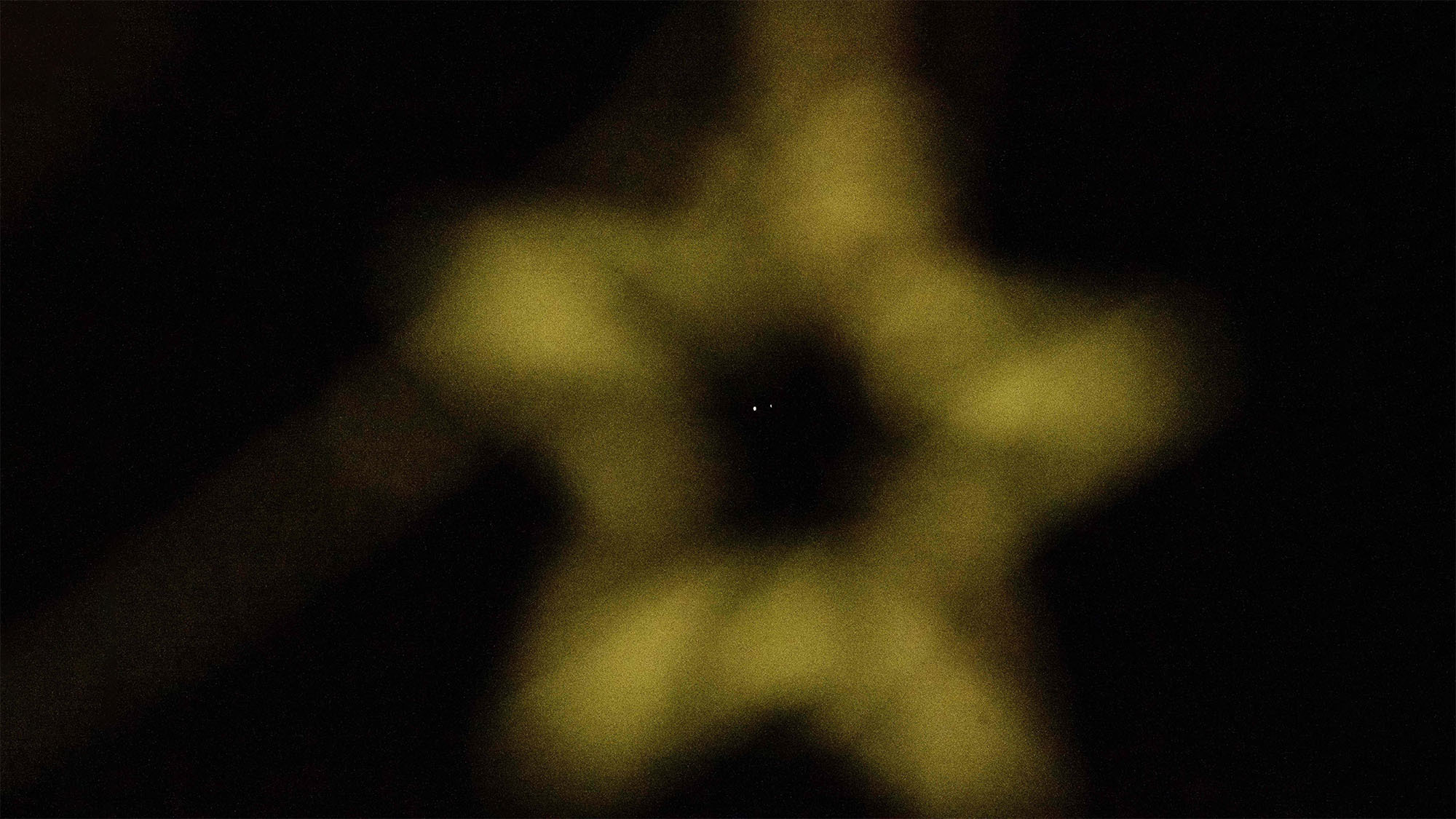
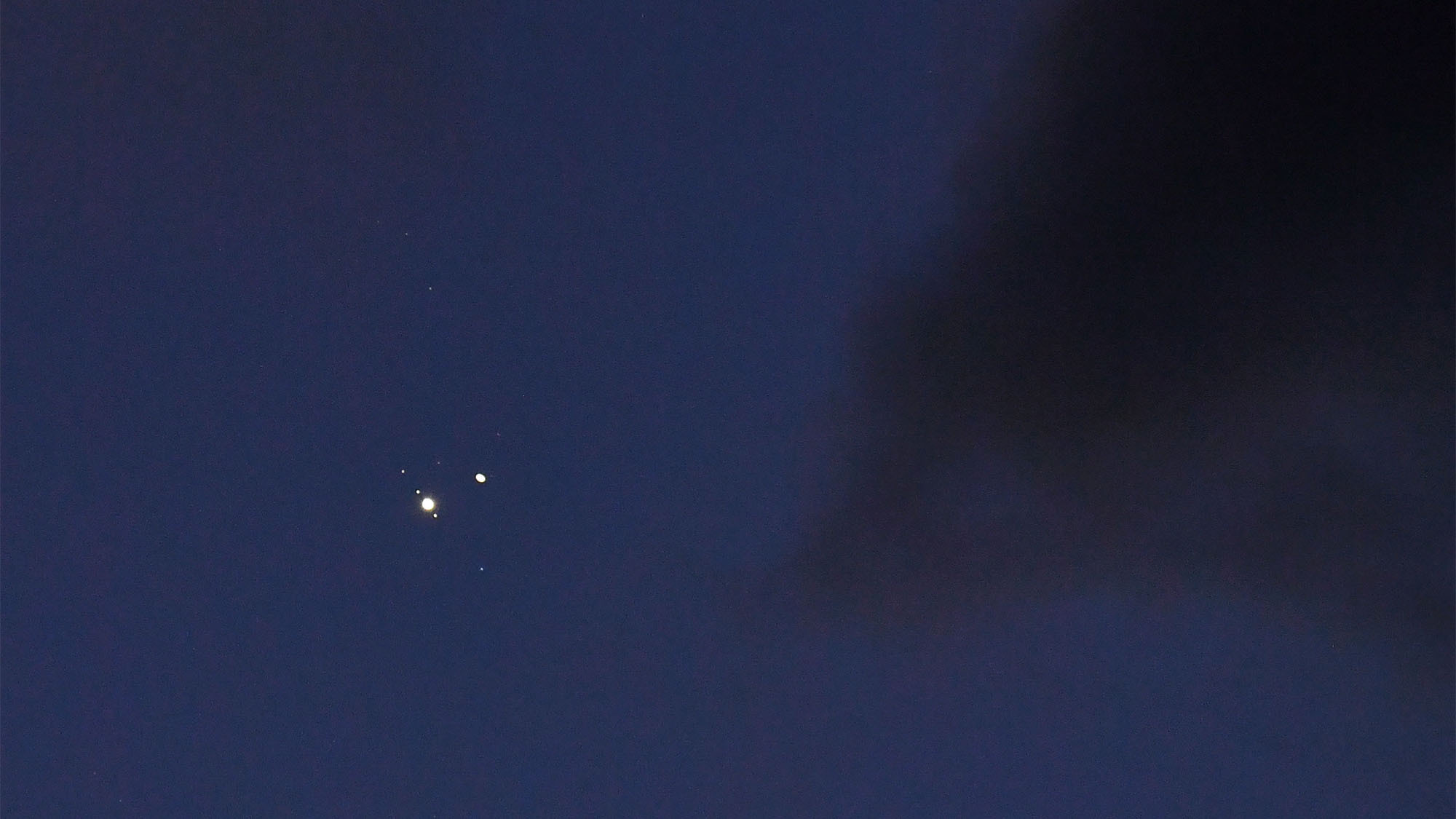
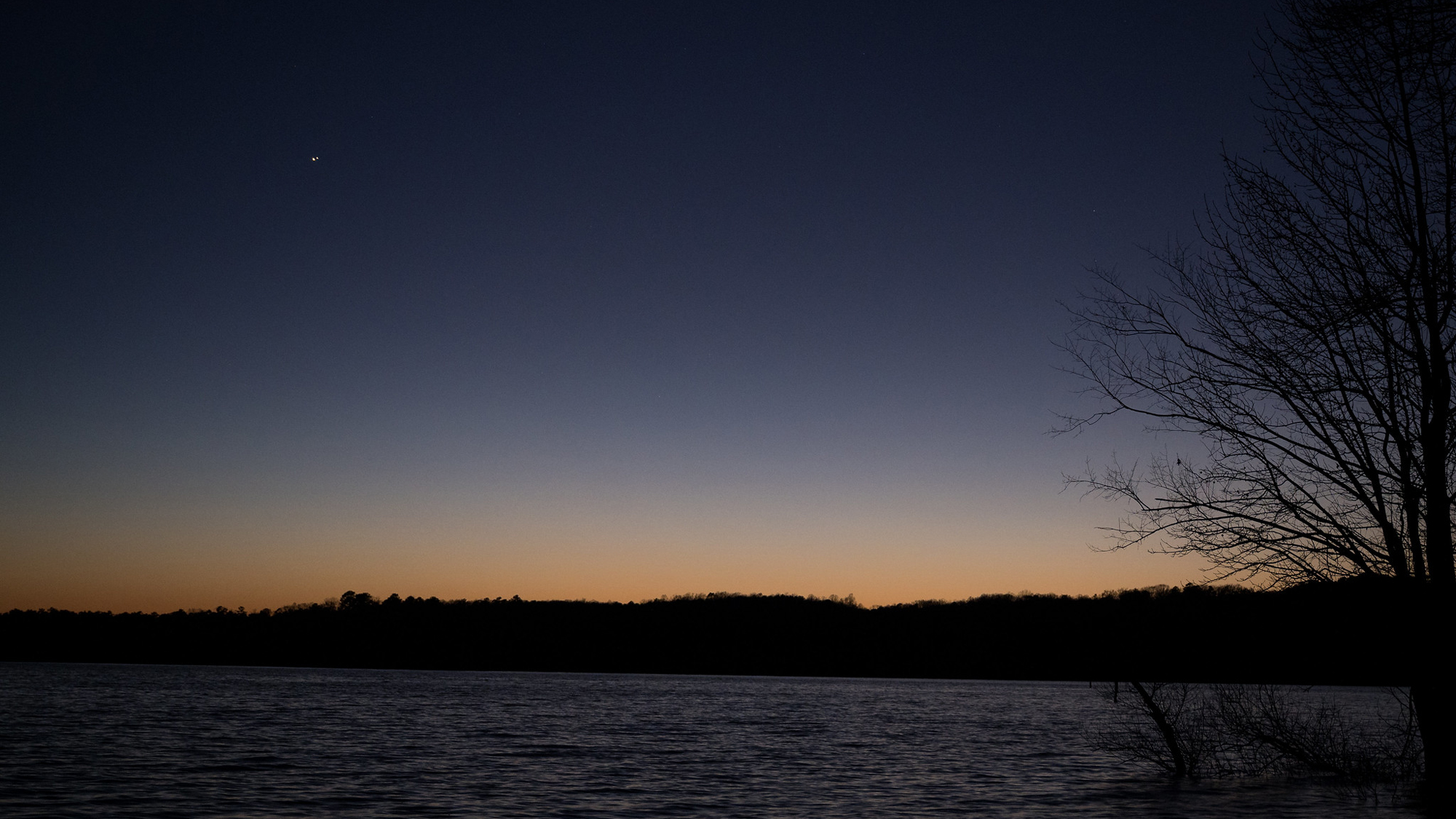
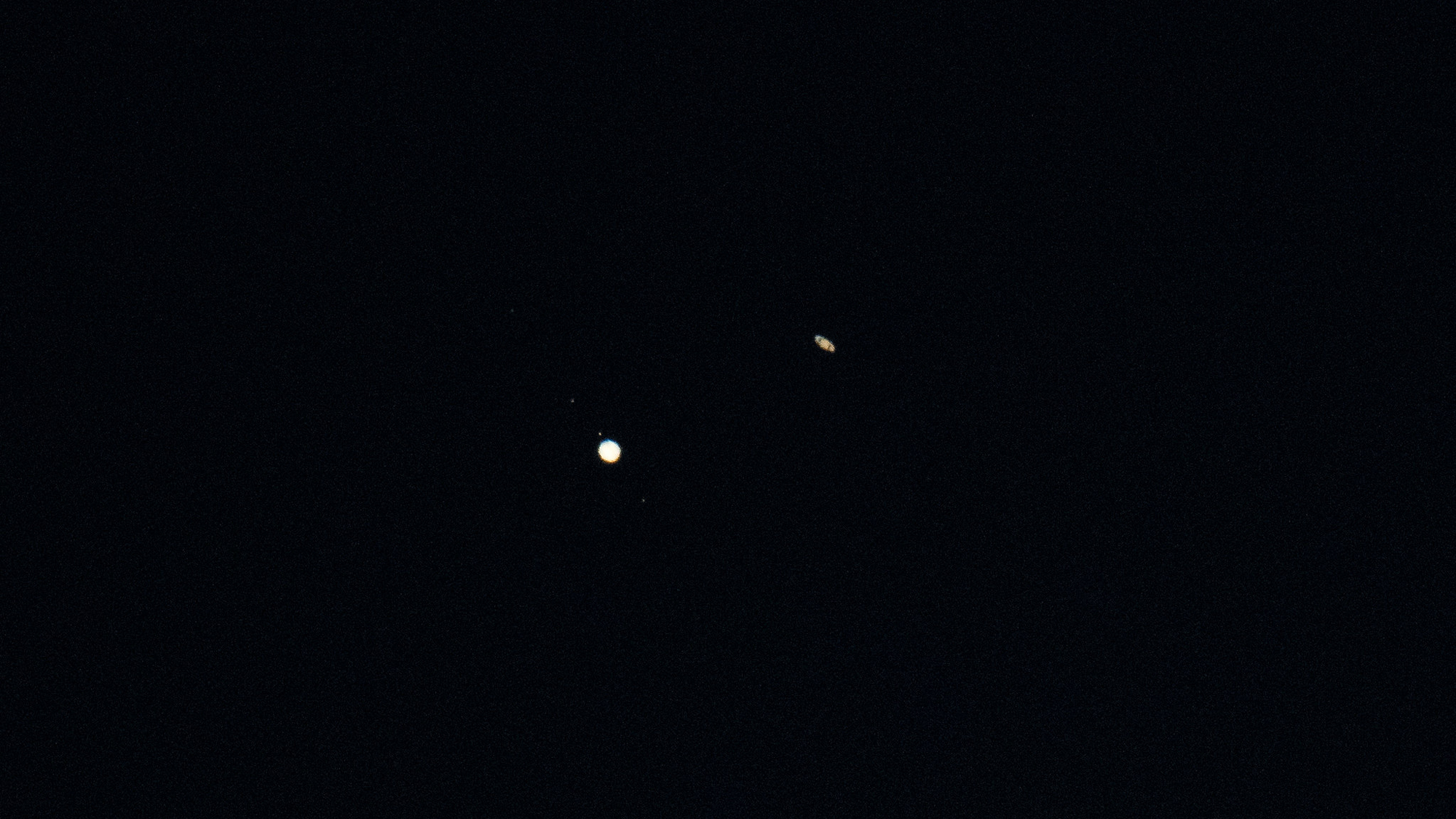
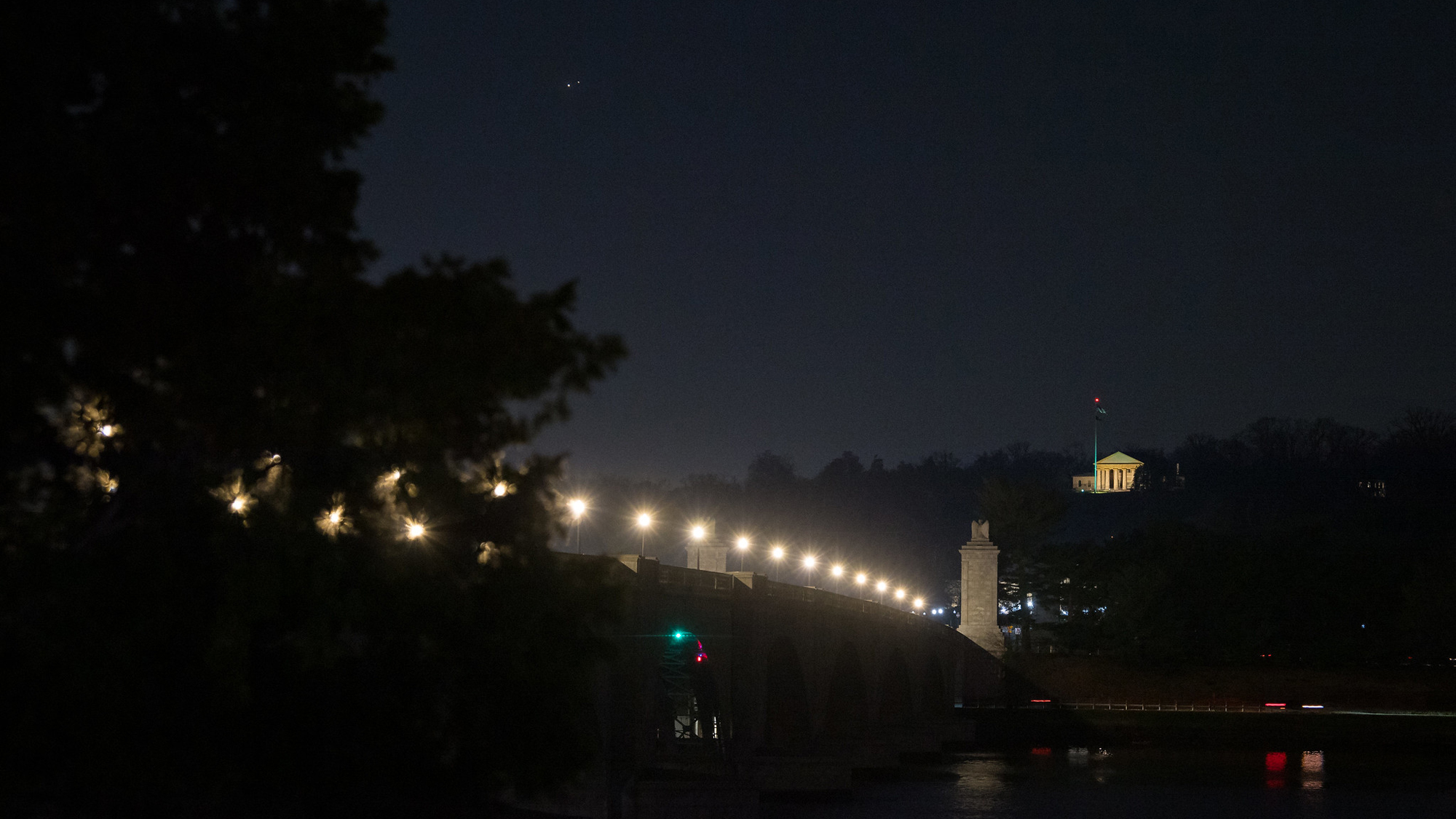
Officials from northern UNESCO World Heritage sites like the Neolithic Passage Tomb of Newgrange in Ireland and Stonehenge in England broadcast live streams today, because these structures were built with the solstices in mind.
The Newgrange site, for instance, has a passage and chamber that are aligned with the rising sun on the mornings around the winter solstice. Cloudy weather obscured sunrise viewing this year, but the presentations were nevertheless informative.
Get the Space.com Newsletter
Breaking space news, the latest updates on rocket launches, skywatching events and more!
There were several webcasts created for the great conjunction. The celestial streaming service Slooh held a live webcast of Monday's great conjunction, hosted by Slooh astronomer Paul Cox. As Slooh shared views of the conjunction via several Slooh-partner telescopes across the world, Cox shared his feelings on how incredible it was to see two cosmic objects so close to one another.
"We often see a comet when it's passing a globular cluster or a deep sky object, like a galaxy or nebula or something like that … but to see these two together is such a rare event," he said.

Astrophysicist Gianluca Masi, founder of the Virtual Telescope Project, broadcast views of the great conjunction from his rooftop in Rome, Italy. In his webcast for the Virtual Telescope Project, he pointed out that three of the Galilean moons — Callisto, Ganymede and Io — were visible to the left of Jupiter, and Europa could be seen on the right.
The Astronomical Observatory University District in Bogota, Colombia held a livestream about the great conjunction in which they connected with other universities in the country. They began their presentation by talking about the indigenous cultures who built structures to mark the solstice. The webcast also featured some live views from different telescopes. The nation's proximity to the equator meant that their sunset and their window of time to view the conjunction occurred later in the day than it did for North American observatories.
In China, state media outlet Xinhua streamed views of the conjunction from Beijing.
The 2020 great conjunction was a rare treat, but the view of Saturn and Jupiter in the sky will be even better in 60 years, according to Bob Berman, Slooh astronomer.
"We won't have to wait another 800 years: actually, the next one is going to be better than this. It will be on March 15, 2080. … It will be just as good or even better than this one."
Follow Doris Elin Urrutia on Twitter @salazar_elin. Follow us on Twitter @Spacedotcom and on Facebook.
Join our Space Forums to keep talking space on the latest missions, night sky and more! And if you have a news tip, correction or comment, let us know at: community@space.com.

Doris is a science journalist and Space.com contributor. She received a B.A. in Sociology and Communications at Fordham University in New York City. Her first work was published in collaboration with London Mining Network, where her love of science writing was born. Her passion for astronomy started as a kid when she helped her sister build a model solar system in the Bronx. She got her first shot at astronomy writing as a Space.com editorial intern and continues to write about all things cosmic for the website. Doris has also written about microscopic plant life for Scientific American’s website and about whale calls for their print magazine. She has also written about ancient humans for Inverse, with stories ranging from how to recreate Pompeii’s cuisine to how to map the Polynesian expansion through genomics. She currently shares her home with two rabbits. Follow her on twitter at @salazar_elin.









